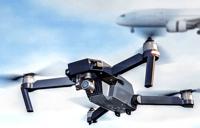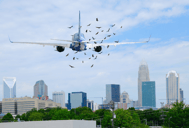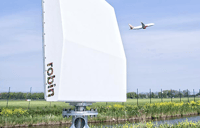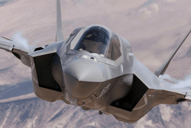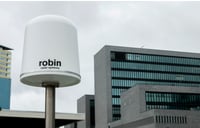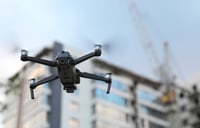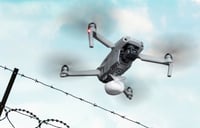For many in the military aviation industry, time and effective operation is critical to success. This is especially true for aircraft, as staying mission-ready and able to quickly react to threats is essential to everyday operations.
Disruptions caused by bird strikes can keep aircraft grounded for hours, or even days while airspace is cleared, slowing operations to a crawl. So, ensuring that aircraft is functional and airworthy at all times is paramount.
Here’s how bird detection radar can minimise that downtime, improve readiness, avoid bird strikes, and help keep your planes in the sky.
1. Improves Insights and Situational Awareness
While traditional military air base radar is great at tracking larger objects like helicopters, planes, and jets, when it comes to bird and drone detection, it can fall short. Manual methods like spotters are less effective when visibility is poor, and human error is a common, costly consequence when reports are delayed or missed altogether.
Bird detection radar helps to mitigate such shortcomings by improving your situational awareness and expanding your existing coverage, allowing you to monitor bird behaviour, flight patterns, and surrounding bird activity, 24 hours a day. This helps to build up an accurate, more detailed picture of your airspace and the wildlife that inhabits it.
The data can then be sent to your control teams, giving them the time to react and deal with any interruptions before they become a real problem. This removes the risk of costly delays that are prevalent with existing, manual tracking and ensures your airspace is kept clear.
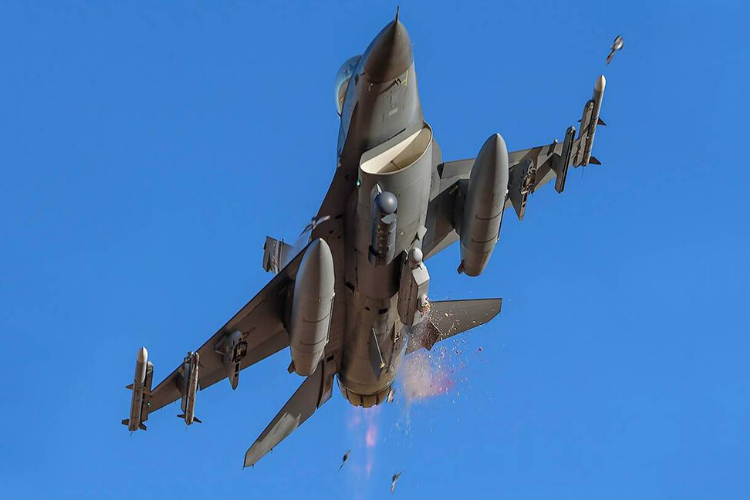
2. Prevents Aircraft From Being Grounded by Unexpected Strikes
Bird strikes are a frequent and unpredictable hazard. They can occur at any time during take-off and landing procedures across your base, posing threats to your aircraft which are difficult to measure and identify before it's too late. Modern military aircraft are particularly vulnerable to bird strikes. Aside from the unforeseen damages, a strike can cause considerable disruption, even preventing flight crews from performing mission-critical tasks.
Fortunately, bird detection radar can detect and classify birds at all times before takeoff and landing. With information about their location, flight path, speed, and more, you can alter plans accordingly and minimise time spent on the ground. This is especially useful due to the irregular flight schedule and high cycle rate of military aircraft, and because many activities use lower altitude airspace, where strikes most commonly occur.
Some avian radars even have preliminary warning systems that will notify your team if birds enter a pre-defined critical, active flight zone. That means no nasty surprises for you and your team when it comes to avian visitors in critical airspace.
.png?width=750&name=Military%20plane%20collision%20(1).png)
3. Helps Crews Plan with Real-time Information & Analytics
When it comes to minimising downtime and preventing bird strikes, data is king. And when it comes to planning, leveraging the data provided by an avian radar can give your control teams the edge.
With real-time information and data analytics tools, teams can access a wealth of recorded data from both past and present. This allows for a more in-depth overview of your surroundings, using historical data to predict bird behaviour with seasonal events, common occurrences, weather, and more factored in.
Plus, you'll be able to measure the effectiveness of any other bird mitigation policies already in place, like habitat adjustments or relocation programmes. This will help with mission planning, training, or any other activity well in advance and with the confidence that disruption will be avoided and downtime minimised.
Avian Radar Gives Teams the Tools to Act Faster
By using an avian radar, you and your team will benefit from improved performance and faster problem solving.
Ultimately, avian radar can mitigate the risk of bird strikes, minimise downtime, and give information that facilitates a much faster response to potential threats.
To see some avian radar in action, take a look at our Schiphol Airport case study.


